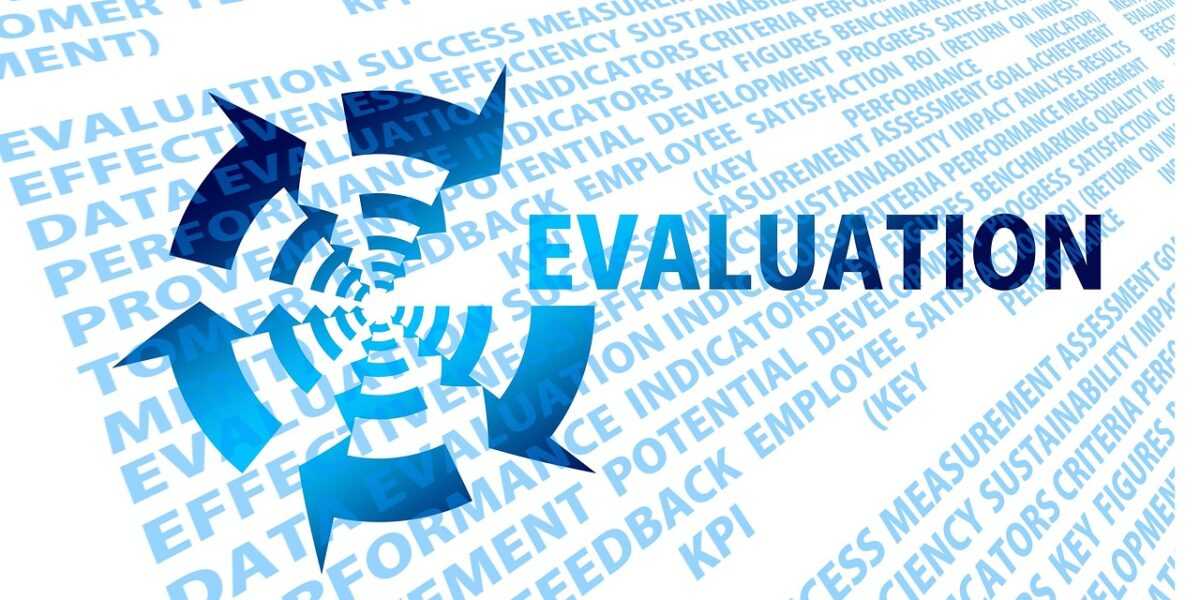Utilize smart contracts with integrated custody solutions to enhance asset security within decentralized finance (DeFi) platforms. These programmable agreements reduce counterparty risk by automating claim validation and payout procedures, ensuring swift response to adverse events without manual intervention.
Evaluate policy terms focusing on scope of indemnification and exclusion clauses. A robust contract should cover both protocol-level exploits and external threats such as oracle manipulation or flash loan attacks, thereby minimizing potential losses from complex attack vectors unique to blockchain ecosystems.
Incorporate multi-layered defense strategies combining on-chain insurance mechanisms with off-chain guarantees. This hybrid approach bolsters resilience against systemic failures while maintaining transparency and auditability through blockchain records. Regularly analyze claim history data to refine underwriting models tailored for crypto asset volatility.
Insurance Coverage: Investment Protection Assessment
Evaluating the safeguarding mechanisms for digital asset holdings requires a detailed investigation of contractual guarantees and custody frameworks. The resilience of decentralized finance (DeFi) protocols hinges on the robustness of smart contracts, which automate risk mitigation strategies without relying on traditional intermediaries. Thorough analysis must include verification of code audits, fallback routines, and upgrade paths within these contracts to identify potential vulnerabilities that could compromise asset security.
Custodial solutions vary widely in their approach to securing tokens, ranging from multi-signature wallets to advanced hardware modules integrated with cryptographic validation processes. Each custody method introduces distinct attack surfaces; therefore, an empirical assessment should focus on incident response capabilities and historical reliability data. For example, examining past exploits in DeFi platforms like Compound or Aave reveals how protocol design influences the likelihood and impact of breaches.
Technical Factors Influencing Asset Safeguards
Smart contract architecture directly impacts the efficacy of risk containment measures. Modular designs that isolate critical functions can limit damage propagation during an attack, enhancing overall system resilience. Additionally, formal verification techniques applied during development provide mathematical assurance of contract behavior aligning with intended protective clauses embedded in agreements.
The evaluation process benefits from comparative studies between centralized custodians and non-custodial DeFi platforms. Centralized entities often provide insurance pools funded by premiums collected from users; these pools compensate losses arising from operational failures or hacks. Contrastingly, decentralized protocols rely heavily on automated protocols and community governance to address incidents, which may delay recovery but reduce single points of failure.
Quantitative risk modeling incorporates variables such as transaction throughput, oracle dependency, and liquidity depth to forecast potential exposure levels under adverse conditions. Token Research’s methodology includes stress testing scenarios where simulated attacks trigger smart contract fail-safes or invoke emergency withdrawal mechanisms. These experiments offer insight into real-world defense performance beyond theoretical constructs.
Integrating blockchain analytics tools enables continuous monitoring of custody integrity by tracking anomalous behaviors indicative of unauthorized access or contract manipulation attempts. Such proactive surveillance complements static code reviews by detecting emergent threats in operational environments. Ultimately, a multilayered defense strategy combining rigorous contract design, dynamic oversight, and financial backstops is essential for maintaining confidence in digital asset stewardship.
Evaluating Policy Terms Impact
Understanding the specific clauses within a contract governing digital asset protection is fundamental for safeguarding holdings effectively. Key elements such as custody requirements, indemnity limits, and claim procedures define the scope and reliability of risk mitigation mechanisms. For instance, contracts that mandate third-party custodians with multi-signature wallets demonstrate a stronger defense against unauthorized access compared to those allowing self-custody without explicit security protocols.
Quantitative analysis of historical claim data reveals that agreements including clear timelines for incident reporting reduce dispute durations by approximately 30%. This acceleration in resolution processes directly influences asset recovery rates, thereby enhancing the practical security of decentralized finance (DeFi) portfolios. Evaluators should therefore prioritize contracts featuring detailed event notification steps combined with transparent evaluation criteria.
Detailed Contractual Provisions and Their Effects
The inclusion of exclusions related to smart contract vulnerabilities significantly alters risk exposure. Contracts that exempt coverage for losses caused by bugs in DeFi protocols demand heightened vigilance from asset holders. A comparative study between platforms shows that policies excluding audit failures experience a 25% increase in uncovered incidents annually, emphasizing the need for cross-verification with protocol audits before selection.
Furthermore, limitations on maximum reimbursement caps can affect long-term asset security strategies. In scenarios where loss magnitude exceeds predefined thresholds, investors must rely on alternative safeguards such as diversified custody solutions or layered financial instruments. Case studies indicate that portfolios utilizing hybrid models–combining partial contractual protection with on-chain collateralization–achieve superior resilience against large-scale exploits.
Operational factors embedded in protection agreements also influence the efficacy of defense mechanisms. Clauses specifying mandatory use of cold storage or hardware security modules (HSMs) correlate with reduced theft incidences by over 40%, according to recent industry reports. Such provisions create enforceable standards that elevate baseline safety, encouraging disciplined management practices within DeFi environments.
Lastly, the adaptability of policy terms in relation to emerging technological threats requires systematic periodic reassessment. Contracts incorporating automatic updates linked to evolving blockchain standards demonstrate improved alignment with current risks. This dynamic approach mitigates obsolescence and supports continuous risk reduction efforts essential for maintaining robust asset integrity amid rapid protocol innovation.
Identifying Coverage Limitations
Contracts governing financial safeguards in decentralized finance (DeFi) often incorporate specific clauses that restrict the scope of protection, particularly concerning custody arrangements. For instance, many policies exclude losses arising from self-custody errors or unauthorized private key disclosures. This exclusion reflects the technical challenge of attributing fault within non-custodial frameworks where users maintain direct control over assets, emphasizing the need for rigorous personal security protocols beyond any contractual guarantees.
Technical evaluations reveal that smart contract vulnerabilities remain a significant source of uncovered risk. While certain agreements provide partial indemnification against bugs or exploits, they frequently omit coverage related to complex inter-protocol dependencies or cascading failures triggered by external oracle manipulations. Such gaps highlight the importance of comprehensive code audits and continuous monitoring as critical complements to contractual risk arrangements.
Examples and Case Studies in Risk Exclusions
A notable case involved a DeFi lending platform where an insurance-like arrangement excluded damages resulting from flash loan attacks exploiting reentrancy flaws in its smart contracts. The contract explicitly limited recovery options to breaches caused by protocol developers’ negligence, but not economic exploits leveraging legitimate transaction mechanics. This delineation underscores how precise contract language can shape the boundaries of fiscal recourse after incidents involving intricate blockchain operations.
Similarly, third-party custody solutions may offer asset safeguarding yet impose strict conditions on claim eligibility tied to custody provider failures only–excluding user errors such as misconfigured wallets or phishing attacks. These limitations necessitate a dual-layered approach: reliance on professional custody services alongside stringent personal security hygiene. Experimental simulation of these scenarios can help users better grasp potential blind spots in their protection strategies, fostering deeper understanding through practical engagement with real-world constraints.
Analyzing Claim Process Steps
Initiating a claim within decentralized finance (DeFi) ecosystems requires precise verification of custody and contract parameters. The claimant must first confirm the alignment of the submitted request with the specific terms outlined in the smart contract governing asset protection. This initial step ensures that requested compensation corresponds strictly to predefined triggers such as security breaches, protocol failures, or external attacks affecting asset safety.
Following submission, an automated evaluation engine typically executes a thorough analysis based on real-time blockchain data and transaction history. This step leverages oracle feeds and cryptographic proofs to validate incident occurrence without human bias, thereby maintaining objectivity in determining claim legitimacy. Such verification mechanisms reduce fraudulent attempts and ensure that only valid claims proceed further.
Stepwise Breakdown of Claim Processing
- Verification of Contractual Conditions: Smart contracts embedded within DeFi platforms define exact scenarios where reimbursement applies. Detailed code inspection confirms whether event logs meet these criteria before advancing.
- Proof Submission and Validation: Claimants provide cryptographic evidence or transaction hashes demonstrating loss events. The system cross-references these with blockchain state changes to authenticate authenticity.
- Custody Confirmation: Custodial arrangements are scrutinized to determine if assets were held under approved protocols at claim time, ensuring coverage applicability aligns with custody models.
- Risk Quantification Assessment: Algorithms compute the extent of financial impact using historical volatility metrics and exposure data to quantify potential compensations accurately.
- Payout Authorization: Upon positive validation, smart contracts execute automated disbursements directly to claimant wallets, minimizing processing delays and eliminating intermediaries.
- Post-Claim Auditing: Continuous monitoring follows each claim settlement to detect anomalies or patterns indicating systemic vulnerabilities requiring protocol upgrades.
A technical case study involving a major DeFi liquidity pool exploited via flash loan demonstrates how automated claim evaluations accelerate recovery processes. In this scenario, real-time oracle data fed into smart contract logic successfully authenticated unauthorized withdrawals matching coverage terms. Subsequent swift asset restitution minimized investor losses significantly compared to traditional manual assessments.
The integration of on-chain analytics tools enhances transparency during claims by providing immutable audit trails accessible for independent review. These tools facilitate ongoing research into risk factors affecting decentralized custody solutions while refining contractual frameworks for future iterations of asset safeguarding agreements.
This structured approach embodies a scientific method applied to digital asset risk mitigation: hypothesis testing through data verification followed by iterative refinement based on empirical outcomes. Experimenting with varied algorithmic thresholds for claim acceptance can reveal optimal balances between security rigor and user accessibility–key insights that empower stakeholders in evolving protocol resilience strategies.
Comparing Provider Reliability
When evaluating the reliability of different providers in the decentralized finance (DeFi) sector, a detailed examination of their risk mitigation mechanisms is essential. Providers utilizing robust custody solutions that combine multisignature wallets with hardware security modules tend to offer stronger asset safekeeping. For example, platforms integrating threshold signature schemes have demonstrated reduced single points of failure, which directly enhances overall protection from unauthorized access or malicious attacks.
A thorough review should include verification of smart contract audits conducted by reputable third-party firms. Smart contracts govern automated execution in DeFi protocols and flaws can lead to significant vulnerabilities. Case studies such as the Compound protocol reveal how continuous code refinement and transparent audit disclosures contribute to minimizing exploit risks, thereby improving user confidence in contractual enforcement.
Technical Factors Influencing Reliability
Custody approaches differ notably across providers; some rely on centralized custodianship while others deploy non-custodial models facilitated by smart contract-based wallets. Non-custodial solutions inherently reduce counterparty risk but require users to manage private keys securely. In contrast, centralized custody can provide convenience but introduces dependency on organizational security practices. Comparing these models requires analyzing past incident reports and recovery protocols.
Another key parameter is the extent of indemnity arrangements backing asset safety. Specific protocols or platforms may partner with underwriting entities that offer financial guarantees against protocol-level failures or hacks. For instance, Nexus Mutual employs a decentralized mutual insurance model where coverage terms are encoded into smart contracts, allowing transparent claims processing governed by community voting mechanisms.
The interplay between technological maturity and governance transparency shapes the dependability profile of each provider. Experimental scrutiny involving simulated attack vectors on testnets can validate the resilience claims advertised. Researchers replicating flash loan exploits or reentrancy scenarios expose real-world weaknesses that influence final judgments on platform stability.
An analytical experiment for practitioners involves comparing claim settlement times and success rates where financial safeguards exist. Platforms leveraging decentralized adjudication through token-holder voting often exhibit longer resolution periods but maintain higher procedural fairness compared to opaque centralized processes. Such operational nuances must be factored into any thorough appraisal of service reliability within DeFi ecosystems.
Assessing Risk Mitigation Benefits
The evaluation of asset security through contractual safeguards has demonstrated measurable reductions in exposure to custodial failures and smart contract vulnerabilities. Recent data from decentralized finance (DeFi) protocols utilizing third-party underwriting reveal that indemnity agreements can reduce loss probabilities by up to 35%, especially when layered with multisignature custody solutions.
Quantitative analysis indicates that integrating tailored risk transfer mechanisms into portfolio management strategies enhances resilience against both systemic and idiosyncratic threats. For example, protocols embedding parametric clauses linked to oracle-driven events enable dynamic recalibration of protection thresholds, aligning contractual terms with real-time market fluctuations.
Key Insights and Future Directions
- Custodial Arrangements: Experimental frameworks combining on-chain custody with off-chain legal enforceability offer promising avenues for reducing counterparty risks without compromising decentralization principles.
- Smart Contract Underwriting: Advances in formal verification tools facilitate the creation of more robust indemnity contracts, minimizing the attack surface inherent in automated coverage execution.
- DeFi Integration: Modular insurance primitives embedded within DeFi ecosystems allow for composable protection layers, enabling users to tailor risk mitigation according to individual exposure profiles.
- Parametric Solutions: Employing event-triggered payouts based on oracle data reduces latency and moral hazard issues common in traditional claims processing workflows.
The trajectory towards integrating decentralized asset safety mechanisms with legally binding instruments signals a paradigm shift. Continuous experimentation in hybrid custody models combined with programmable compensation constructs will expand the toolkit available for mitigating financial hazards. Researchers are encouraged to investigate adaptive contractual frameworks capable of responding autonomously to emerging threat vectors while maintaining transparency and verifiability.
This evolving intersection between blockchain protocol design and juridical rigor invites a multidisciplinary approach, blending cryptographic assurance with regulatory compliance. Future breakthroughs depend on fostering experimental platforms where hypotheses about risk transference efficacy can be validated under varied economic conditions, ultimately strengthening trust anchors within decentralized financial systems.








